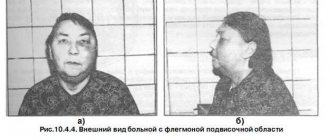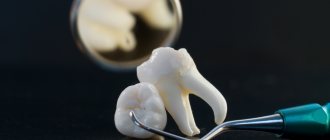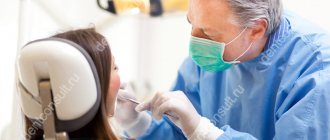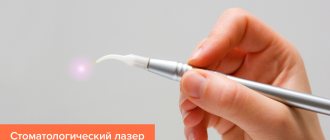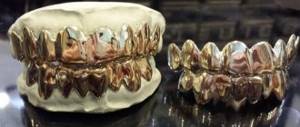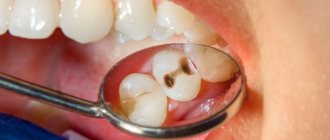Chronic periostitis is a fairly rare disease in the practice of dentists. However, a competent specialist needs to understand all the symptoms of chronic periostitis, the clinical picture, and the comparative characteristics of chronic periostitis with neoplasms in the patient’s jaw. And so, if you look at it, then all chronic processes were preceded by an acute stage. So it is with chronic periostitis. Most often, this process, chronic periostitis, was preceded by acute periostitis. Question: what contributed to the chronicity of the pathological process? The answer is simple - a weak immune response. Therefore, chronic periostitis is more common in children or the elderly, or in people with weak immunity. If we talk about children, then quite often dentists and surgeons have to diagnose them with “Chronic periostitis”. This is due to the active growth of bones and periosteum in childhood. Also in children, this process is primarily chronic, that is, there is no acute stage.
Historical reference
Tooth abscess, “tooth fire” - these are just some of the “folk” names for this disease that have come down to us from antiquity. In those days, a patient who came to a doctor with a gumboil, in the overwhelming majority of cases, left him... without a tooth, because the removal of the causative tooth seemed to be the only reliable “remedy” for all dental diseases. However, it is impossible not to mention the existing artifacts - the found skulls dating back to the time of the Old Kingdom, with traces of drilling in the jaw, in all likelihood to release pus - proving that even in those days attempts were made not to get rid of diseased teeth, but to treat them1.
But since medicine in those days was an “expensive pleasure,” people looked for ways to help themselves on their own, and traditional medicine always came to their aid. For example, in the treatment of gumboil, ground garlic was used as the most powerful natural antibiotic. Clove oil, peppermint oil and oregano oil, which have analgesic, bactericidal, and antiseptic properties, were widely used, as were warm salt water, apple cider vinegar, sesame seeds, herbal rinses, and even raw potatoes. Among the more “modern” folk remedies, rinsing with hydrogen peroxide and baking soda is known. Of course, all these “medicines” had extremely low effectiveness, in many cases they were simply useless, and in some cases they were dangerous, since they took up precious time, during which the active inflammatory process led to sepsis. And only at the end of the 19th and beginning of the 20th centuries, when medical science began to develop steadily and rapidly, did doctors have truly effective means of combating periostitis.
Anatomy of the periosteum
The periosteum, or periosteum , is a membrane (film) consisting of connective tissue that covers almost the entire outer surface of the bone and connects it with the surrounding soft tissues - muscle tendons and ligaments. The periosteum is usually divided into an outer fibrous layer and an inner cellular layer. Blood vessels feeding the bone pass through both these layers, branching out. In addition to the blood supply to the bone, the periosteum is involved in bone formation - during the embryonic period and during bone growth, it stimulates bone formation due to the activity of osteoblasts, which are located in the internal osteogenic layer. In the adult body, it is thanks to the periosteum, or more precisely, the growth of its elements, that a “protective” callus is formed. The thickness of the periosteum in different places of its attachment to the bone is different, and also thickens with age: in adults it is 2-8 times thicker than in children 2. Periostitis: definition, etiology, pathogenesis.
Periostitis, or flux (German Fluß – “flow”, “flow”) is an infectious inflammatory-purulent process, characterized by the accumulation of purulent masses under the periosteum, which leads to periodontal abscesses. The most striking signs of periostitis are significant swelling of the soft tissues and severe pain. The disease occurs against the background of deep chronic odontogenic processes: chronic sinusitis, suppurating jaw cysts, benign and malignant formations, difficult teething (in small children), pericoronitis, retromolar abscess, phlegmon of the masticatory space.
Another cause of periostitis is trauma: a fracture of the jaw, wounds of the surrounding soft tissues, etc. Sometimes the disease begins to develop due to the spread of infection from certain organs through the blood and lymphatic vessels (for example, with chronic and purulent pathologies of the respiratory tract, with tuberculosis , actiminosis, etc.). The development of the disease is facilitated by stress, hypothermia, overwork, sudden climate change, diets low in calcium, recent viral or chronic colds, that is, all those periods of a person’s life when his immunity is weakened and the body is sensitized, that is, acutely sensitive to infectious attacks. . It should be noted that the most common “initiators” of such attacks are staphylococci and streptococci.
At the cellular level, the development of the disease occurs as follows: when the infection enters the tooth canal, and from it into the periodontium, a chronic odontogenic focus is formed. The so-called “first contact” of immune system cells with antigens occurs. This contact is important because it is from this moment that the defense cells begin to receive information about the antigen as such and produce special protective substances - antibodies, “preparing” for the next “meeting”. It usually occurs as follows: during a period when immunity decreases due to various reasons (stress, hypothermia, injury, etc.), the protective properties of the pyogenic membrane (purulent membrane), which separates the lesion from the surrounding healthy tissue, are disrupted. As a result, a large number of antigens enter them, meet with antibodies of the immune system, and settle on the inner walls of the capillaries.
Afterwards, when the immune system is restored, immunoglobulins, macrophages and other cells of the immune system begin to fight the antigen-antibody complex. During the struggle, successive reactions trigger the inflammatory process.
First, microthrombi form, forming edema, then the accumulation of exudate begins, and over time, pus. Depending on how pronounced the pathogenic microflora is and how weakened the immune system is, it will depend on how and how quickly the inflammatory process begins to develop. In most cases, it is serous, sluggish, begins in the area of the tooth root and covers a limited area - the periosteum of the alveolar process, but sometimes spreads further. Periostitis of the lower jaw occurs twice as often as maxillary periostitis, and in most cases affects multi-rooted teeth, which is due to the peculiarities of their anatomical structure and high vulnerability to infectious attack. Note from the author: It should be noted that periostitis is a rather controversial diagnosis, since, for example, military medicine does not recognize such a disease, considering it focal odontogenic osteomyelitis. But with osteomyelitis, the infectious process is so strong, and the immune system is so weakened that the inflammatory process affects the bone so deeply that sequesters are formed in it - areas of dead tissue separated from living tissue. It is the process of sequestration that is the true “mark” of osteomyelitis and its distinguishing feature from periostitis3.
The initial phase of periostitis almost always occurs “spontaneously”, the inflammatory process usually develops rapidly, violently, “in a matter of hours”, but sometimes it can last for 1-2 days. General health deteriorates significantly: body temperature rises, chills, weakness, headaches appear, and sleep is disturbed at night. Pain in the focal zone (in the area of the causative tooth) constantly increases, becoming unbearable, then covers the entire jaw and can radiate (give) along the branches of the trigeminal nerve to the neck, temple, ear, eye.
After some time, rapidly growing swelling of the peri-maxillary soft tissues develops; the pain during this period becomes less pronounced and passes from acute pulsating to aching. After a few days, the swelling decreases as the inflammatory focus expands, covering adjacent tissues. The skin over the edematous tissues is “tight,” and the regional lymph nodes in the jaw and neck are enlarged. In the oral cavity, the gums and mucous membrane of the transitional fold and cheeks are hyperemic and swollen; palpation reveals a dense infiltrate, and if periostitis has a purulent form, a roll-shaped abscess of the periosteum, which then forms a subgingival abscess (purulent contents literally “dissolve” the periosteum and breaks through under the mucous membrane gums). In some cases, periostitis is complicated by the formation of a fistulous tract through which pus comes out onto the surface of the face. In this case, inflammation decreases, but the disease becomes chronic and threatens to infect neighboring and more distant tissues, causing various complications: pustular skin lesions, osteomyelitis, tissue phlegmon, sepsis. If symptoms of periostitis occur, urgently seek professional dental care.
Development mechanism
When an infection enters the subcutaneous environment, inflammation rapidly develops. The high intensity of the pathological process is explained by several factors.
These include:
- Rapid development of intoxication;
- Lack of an adequate immune response of the body;
- Decreased local immunity;
- The presence of optimal conditions for the growth of bacteria.
Due to the rapid development, granulation tissue does not have time to form, which should protect the source of inflammation from healthy tissue. Therefore, the pathological process spreads quickly.
Types of periostitis
The ICD-10 (tenth revision) classification of diseases developed by the World Health Organization, as amended, identifies three main types of periostitis: acute, chronic and purulent in accordance with classifier code K10.2 (inflammatory diseases of the jaws)4.
Acute periostitis is the most common type of periostitis and, as a rule, is an “accompanying” disease during exacerbation of chronic periodontitis. A rapidly developing inflammatory process causes the accumulation of odontogenic contents at the tooth root, as a result - swelling of the soft tissues and loosening of the periosteum, the inner layer of which melts, which causes detachment of the periosteum, disrupts the blood supply in it and causes deep degenerative changes in the bone tissue.
Purulent periostitis is characterized by the transition of serous contents in the inflammatory focus into serous-purulent, and then into purulent exudate. An abscess occurs, followed by a breakthrough of purulent masses under the mucous membrane of the gums or through the fistulous tract to the outside.
Chronic periostitis always means that in the patient’s body there remains a focus of long-term sensabilization - increased sensitivity to infectious stimuli, for example, in the presence of a diseased tooth that has not been treated in the acute stage of periostitis, or in chronic sinusitis, etc. A long course of chronic periostitis can lead to ossification - proliferation of bone tissue. At even longer periods, a “bulbous pattern” of the periosteum is observed (vertical dissection and layering)3.
Treatment methods for periostitis
In the treatment of periostitis, therapeutic, physiotherapeutic, endodontic and surgical techniques are used. Their choice is determined by the attending physician based on the diagnostics performed: visual and instrumental examination; X-ray examinations – OPTG, CT; The patient’s subjective feelings are also taken into account, and to establish the most accurate diagnosis, a general clinical blood test can be prescribed, additionally, if necessary, a biochemical test, as well as a urine test and others. The choice of a set of diagnostic measures depends on the severity of the disease, on the characteristics of its course, that is, it is always individual. But at the same time, he strictly adheres to medical regulations, norms and requirements.
Often, when planning treatment for periostitis, the doctor is faced with the question: to save or remove the tooth? Single-rooted teeth with well-passable canals are usually preserved. If a focus of bone destruction is found in the area of the root apex, it is advisable to perform the operation “Resection of the root apex” and subsequent anti-inflammatory treatment. Multi-rooted teeth are most often removed, but if this procedure involves significant trauma, for example, removal of an impacted or dystopic tooth, it is advisable to carry out the removal after complete elimination of inflammation (7-10 days).
If the development of periostitis is just beginning (the first hours of the disease) or if the disease has taken a chronic form, complex treatment is most effective, that is, a combination of endodontic, medicinal (usually non-steroidal anti-inflammatory drugs) and physiotherapeutic procedures. When treating periostitis in the acute and serous stages, a periostotomy is always performed - an incision to relieve internal tension under the periosteum and prevent the spread of infection. Next, the tooth, depending on its condition, undergoes endodontic or endodontic-surgical treatment. It is worth noting that purulent and serous periostitis necessarily include surgical treatment methods. In the postoperative period, the patient must come daily for examinations, dressings, UHF and other physiotherapeutic procedures (as prescribed) and strictly follow the doctor’s recommendations at home: daily rinse the mouth with antiseptic solutions, take prescribed medications, etc.4.
Symptoms
Symptoms of inflammation occur quickly, which is explained by the short incubation period of bacteria
The nature of clinical manifestations varies depending on the location of inflammation.
As a rule, the pathology is acute. Symptoms of inflammation occur quickly, which is explained by the short incubation period of the bacteria.
Main features:
- High body temperature;
- Symptoms of general intoxication (nausea, vomiting, dizziness);
- Muscle weakness, tremors;
- Chills;
- Headache;
- Toothache;
- Decreased appetite;
- Pain when swallowing.
Important to remember! Local symptoms, such as swelling, swelling of the skin, redness, do not appear immediately. Therefore, the symptoms of phlegmon are often mistaken for other diseases. A distinctive feature is intense pain at the site of inflammation.
External signs
After symptoms of inflammation appear on the skin at the site of the lesion, local symptoms occur.
These include:
- Swelling;
- Change in skin color;
- Hyperemia;
- Cracks in the skin;
- Pain when moving;
- Formation of a purulent fistula.
Conventionally, the course of phlegmon can be divided into 2 stages. At the first stage, a dense formation appears under the skin, which is easily felt by palpation. At the next stage, the compaction softens, indicating the secretion of pus.
Price
Since periostitis and its complications can be life-threatening, in public medical institutions and in some commercial clinics assistance to patients with this diagnosis is provided free of charge under the compulsory medical insurance policy. But most private clinics are not included in the compulsory medical insurance program. In each specific case, periostitis requires a strictly individual approach, and the cost of treatment depends on the following factors and their combination: the diagnostic examination performed (OPTG, X-ray, in some cases - CT scan, examination); treatment algorithm (developed on the basis of the diagnosis, stage of the disease, characteristics of its course), methods, materials, drugs, tools and equipment used in treatment; additional physiotherapeutic procedures (if prescribed); consultations with narrow specialists (if necessary); qualification of the attending physician.
Periostitis is a dangerous infectious disease of the oral cavity. When its symptoms appear, it is extremely important to seek professional medical help as soon as possible, because periostitis of the jaw not only causes severe pain, but also poses a serious threat to the entire body, causing complications of varying severity, including blood poisoning. Timely, qualified treatment in a dental clinic is a guarantee of eliminating the existing pathology and, in many cases, saving the causative tooth.
According to antiplagiat.ru, the uniqueness of the text as of October 16, 2018 is 100%.
Key words, tags: tooth-preserving operations, bone grafting, orthopantomography, tooth extraction, dental cyst.
1 I. Zimin. "From the history of healing." 2 Great Medical Encyclopedia (Electronic reference book on human anatomy, www.spravochnik-anatomia.ru). 3 Shargorodsky A.G. Inflammatory diseases of the tissues of the maxillofacial area and neck. 2001. 4 https://mkb-10.com 5 “Surgical dentistry” edited by Robustova T.G. Fourth edition. Moscow "Medicine" 2010; https://rcmfs.ru/%D0%BF%D0%BE%D0%BB%D0%B8%D0%BA%D0%BB%D0%B8%D0%BD%D0%B8%D0%BA%D0 %B0/%D0%BB%D0%B5%D1%87%D0%B5%D0%BD%D0%B8%D0%B5%D0%BF%D0%B5%D1%80%D0%B8%D0% BE%D1%81%D1%82%D0%B8%D1%82%D0%B0.html
Diagnostic procedures
The diagnosis is made on the basis of anamnesis and external examination of the patient. The presence of acute or chronic infectious diseases is taken into account. Auxiliary diagnostic procedures are prescribed to determine the severity of the pathology.
During diagnosis, it is extremely important to determine the type of infection that provokes the pathology. This will allow further effective antibacterial treatment.
To determine the type of pathogen, a puncture biopsy is performed, during which purulent contents are collected, which are further studied in the laboratory.
